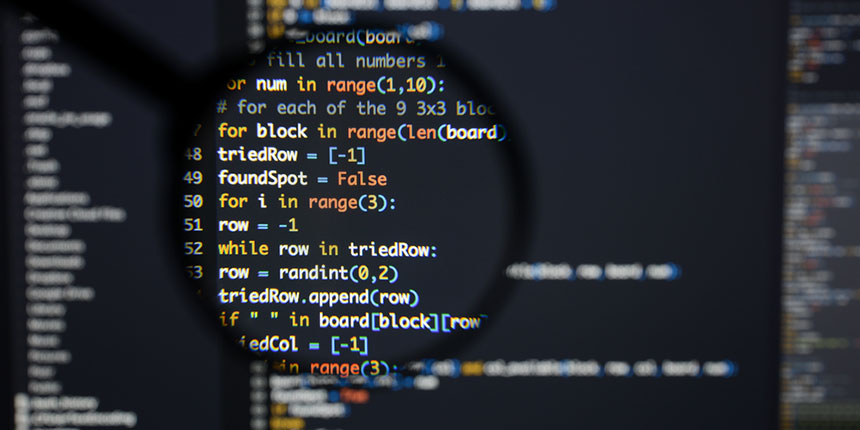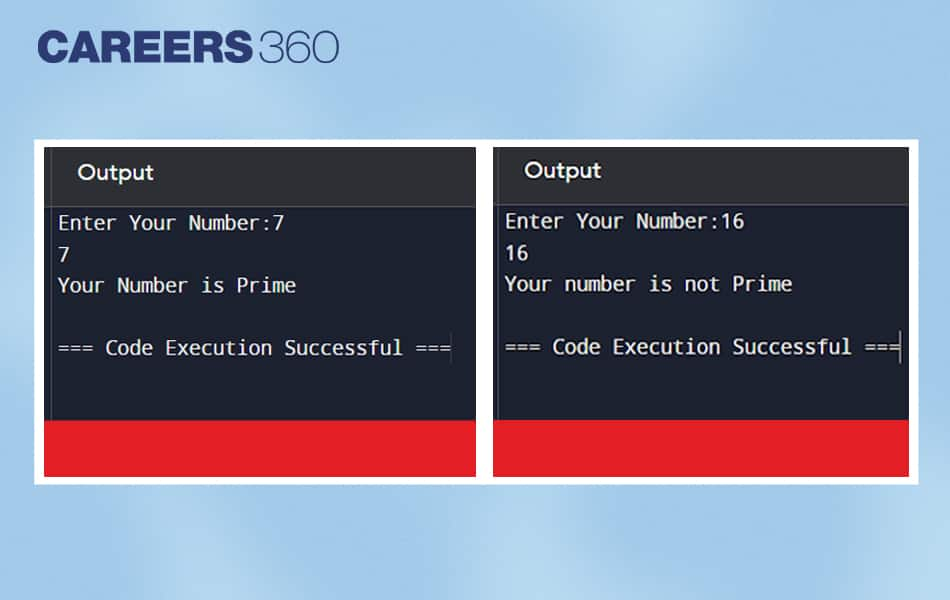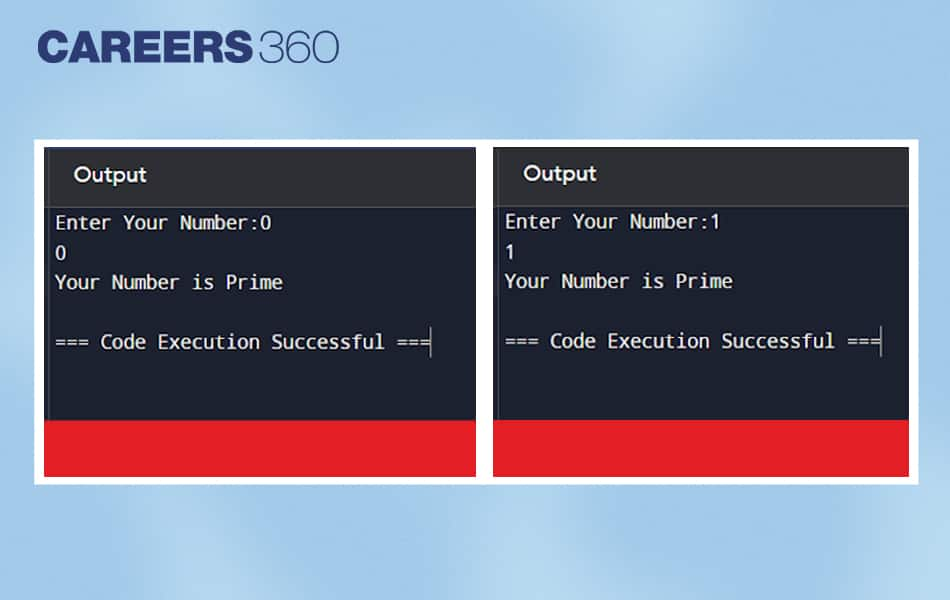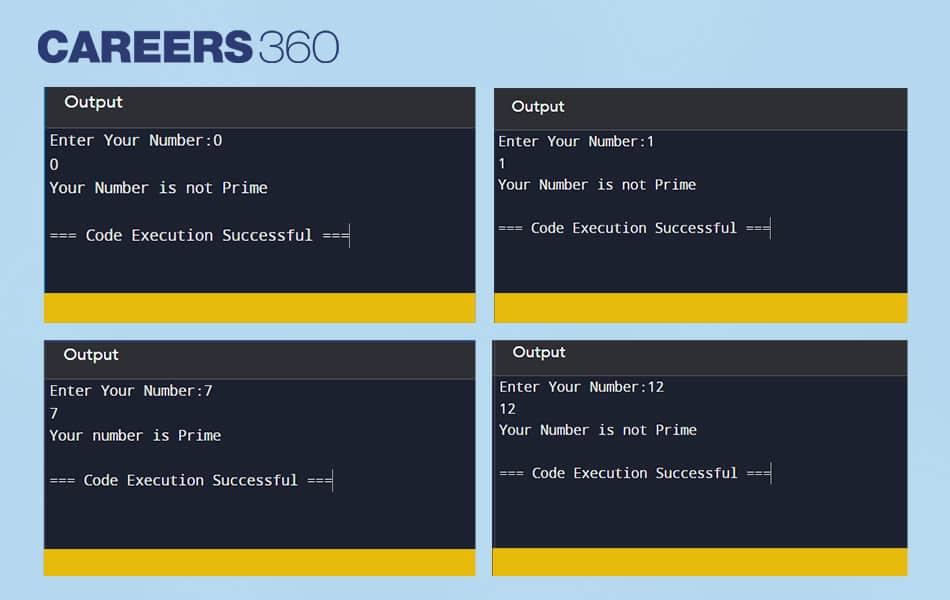Presidency University BCA Admissions 2026
AICTE & UGC Approved | NAAC A+ Accredited | Scholarships Available
A prime number is a whole number with only two positive factors: 1 and itself. The first five prime numbers are 2, 3, 5, 7, and 11. Kindly note that 1 is not a prime number. In addition to mathematics, computer science is a field where prime numbers are used on a large scale, specifically in Cryptography, calculating Hash Codes, and other algorithms.

In this article, we will provide you with easy demonstrations of a Python program to find whether a number is prime or not. If you are interested in gaining further knowledge in this domain, you can also go through the list of Online Python Courses and Certifications listed on the Careers360 website.
Also Read:
There are “n” number of ways to write Python code to check prime numbers. You can use recursion, a flag variable, a division method, or loops to find out whether the given number is prime or not. In this section, we will cover both basic and optimised methods for this task.
num = int(input("Enter Your Number:"))
print(num)
for i in range(2, num):
if num % i == 0:
print("Your number is not Prime")
break
else:
print("Your Number is Prime")

Images showing the output of the code for two different input
We can see this prime number code working well for most cases, but do you think this is efficient and will work for all scenarios? No, it will not. In this code, we have provided a range starting from 2.
But what if the user enters the input like 1, 0, or any other negative number? For these inputs also, this prime number code will perform well? Have a look at the below-provided output images.

Images showing the output of the inputs 0 and 1
As you can see, the output of the inputs 0 and 1 is not what we desired because, neither 0 is a prime number nor a 1. To tackle this problem, in the following section of the article, we have provided an optimised code solution.
num = int(input("Enter Your Number:"))
print(num)
import math
def prime_function(num):
if num<=1:
return False
for i in range(2, int(math.sqrt(num))+1):
if num % i == 0:
return False
return True
if prime_function(num):
print("Your number is Prime")
else:
print("Your Number is not Prime")

Image showing output for different inputs entered by the user by compiling above-mentioned program
The first thing to understand is that the factor of number will never be greater than half of that number. Therefore, instead of considering a range up to the ‘num’ itself, we can limit the range to num // 2 + 1. To optmise it more, we can use an in-built Python module called ‘math’.
Also Read:
The prime number code in Python can be applied in various scenarios. Whether you need to identify prime numbers for cryptography, number theory, or other mathematical applications, this prime no program in Python will be a valuable tool in your toolkit.
Cryptography: Prime numbers are at the core of modern cryptography. They play a crucial role in securing data and provide the basis for encryption and decryption algorithms.
Random Number Generation: Prime numbers are often used to generate pseudo-random numbers in computer programs, simulations, and games. These random numbers are required for initialisation vectors and for generating private and public keys.
Optimisation Algorithms: In various optimisation problems, prime numbers can be used to create unique solutions.
Number Theory: The branch of mathematics that shows the number and the relation between them is called ‘number theory’. Prime numbers are important to number theory as they are used in digital signatures, error correction, and hashing.
Prime number program in Python is one of the basic and yet considered an important concept for advanced topics like number theory or cryptography. In this guide, we have covered the definition of prime numbers, a basic method for checking prime numbers, and an optimised method to make the process more efficient.
Other than the above-discussed ways of finding whether a number is prime or not in Python, there are many other techniques. You can practice the given code to enhance your understanding and even modify it according to your logic.
Frequently Asked Questions (FAQs)
A prime number is an integer greater than 1 that has only two distinct divisors: 1 and itself. They are crucial in various fields, including cryptography and number theory, due to their unique properties.
You can determine if a number is prime in Python by using algorithms that check for its divisibility. We cover both a basic and an optimised method in this guide.
The basic method checks for divisibility from 2 to the square root of the number. In contrast, the optimised method extends the efficiency by reducing the number of checks, especially for larger prime numbers.
Prime numbers play a crucial role in cryptography, where they are used to ensure secure communication and data protection. They are also used in various algorithms for generating random numbers.
Yes, there are. Goldbach's Conjecture, for example, remains an unsolved problem in number theory, stating that every even integer greater than 2 can be expressed as the sum of two prime numbers.
Among top 100 Universities Globally in the Times Higher Education (THE) Interdisciplinary Science Rankings 2026
Ranked #45 Among Universities in India by NIRF | 1950+ Students Placed, 91% Placement, 800+ Recruiters
India's youngest NAAC A++ accredited University | NIRF rank band 151-200 | 2200 Recruiters | 45.98 Lakhs Highest Package
A++ Grade by NAAC | Recognized as Category-1 University by UGC | 100% Placement, 75 LPA Highest CTC, 487 Recruiters
#1 Private University | Top Recruiters: Amazon, KPIT, Tech Mahindra
60+ Years of Education Legacy | UGC & AICTE Approved | Prestigious Scholarship Worth 6 Crores